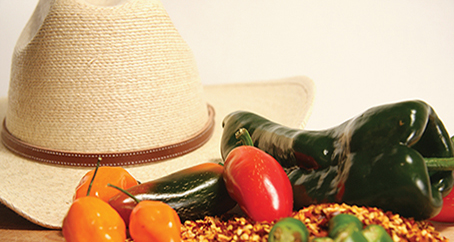Welcome to Blue Book!
Are you ready to join the thousands of companies who rely on Blue Book to drive smarter decisions? View our plans and get started today!
Still have questions? We’d love to show you what Blue Book can do for you. Drop us a line– we’ve been waiting for you.

In Dallas, the produce business is divided among wholesalers peppered throughout the city. On the upside, there’s runaway growth in the Dallas/Ft. Worth metropolitan area, providing plenty of opportunity. On the downside, wholesalers are dealing with a shifting retail landscape as larger chains choose to source direct. All in all, though, most Dallas-based suppliers are holding their own in this North Texas hub.
Terminal Market Demise
Once upon a time, back in the 1940s, Dallas had its own terminal market. But as with other locales, changes in city planning and produce delivery channels negatively impacted sales. As high-value real estate, the site was redeveloped in recent years following a $65 million private investment in 2013. What remains of the wholesale operation is ‘the Shed’—an open warehouse farmers’ market in a mixed-use commercial and residential development.
“In 1941, when this was founded, it was all farmers as I understand it,” explains Amanda Vanhoozier, director of market operations at the Shed. “But in the 1980s, when corporate farming and big box stores started coming in, family farms started to fail. Some of the families started moving sourced produce, and more and more wholesalers moved into the region. Customers thought they were buying direct from farmers,” Vanhoozier notes, but many times “they were buying wholesale produce at the market.”
The city requested proposals to develop the terminal market property in 2011, which resulted in the 2013 private investment. As of June 2015, the Shed is open Friday, Saturday, and Sunday for farmers to sell to the public; only on Sunday and Thursday nights can wholesalers use the space to move produce.
Not surprisingly, wholesalers have a mixed view of the Shed. “They tell vendors they can only bring in certain items or certain products,” comments Cliff Yarborough, general manager at Harrington Produce Company. “It looks like they’re trying to run some people off, and from one point of view, they have.”
“The land was worth a lot in that area and [the city] let developers come in and build it,” remarks Jason Douglas, vice president for Reaves Brokerage Company. “It’s not an actual market like it used to be; years ago, every night the farmers would pull up with fresh produce, now there are a few stalls down there selling produce, but over the last 10 to 12 years, all the wholesalers have been squeezed out.”
Juan Manuel Ibarra, CEO of Marengo Foods Company LLC doesn’t mince words. “That area is dying in terms of wholesale,” he says. “We got pushed out of there six months ago, and never really had a lot of walk-in business anyway.”
Beyond the Shed, over the decades, the wholesale market has had to adapt to other changes such as chain stores sourcing direct. “The wholesale market in Dallas is relatively consolidated at this point,” observes Tony Stachurski, corporate vice president at Hardies Fresh Foods. “The days of wholesale suppliers trading here are fewer, and larger players like us don’t depend on it like we did in the past, as we’re sourcing more direct and taking that to our end customers.”
Market Volatility
Weather has had a huge impact on crops this season—creating shortages and pushing prices higher. “We had some major delays from the rains in Mexico,” Ibarra confirms. “Our Beefsteak tomatoes were delayed about three weeks, and some of the early cucumbers were affected. The prices have been high, but the markets are still pretty good.”
“So far, this year has been the worst,” states Andy Nguyen, president at Quality Produce Distributing, LLC. “I sell mostly oranges and other fruit, and this year there just isn’t enough product. Dry weather and wind hit the flowers. Last year I could get ten loads a week, and this year, none. Even the price of other fruit, such as mangos out of Mexico, is very high.”
Nguyen, who sells to the retail market, says this year’s premiums have been scaring buyers away. “Some of my products that were selling for $15 a box last year cost $35 a box this year—my customers can’t afford it because consumers won’t buy at those prices.”




